I have long loved needle lace in most of its forms.
I’ve not explored it in serious depth, but I have dabbled with it, read about it, and in general, I’m always attracted by needle lace, both ancient and modern. There are certain types of needle lace that appeal to me more than others, and there are various practical uses of needle lace techniques in embroidery (or in finishing) that I think are worth knowing for any embroiderer.
Lately, I’ve been considering some further explorations of needle lace, and to that end, I’ve been pulling together my own resources and discovering a few new ones.
Today, I’d like to show you a needle lace book that I came across lately, that I like and that I think has some excellent merits when it comes to instructional content.
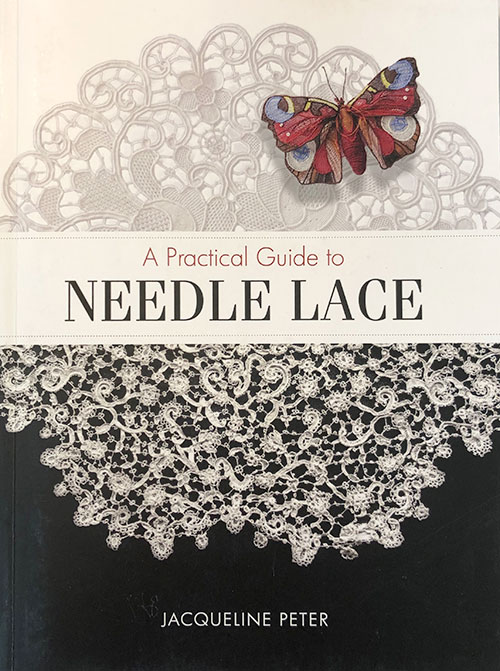
A Practical Guide to Needle Lace by Jacqueline Peter was originally published in France as Guide pratique: la dentelle à l’aiguille, and it is an excellent overview of needle lace.
Needle lace is lace that is made using needle, threads, and a fairly limited variety of what we know as embroidery stitches. There are various types of needle lace, but the gist is that they are formed from stitches using a needle and thread – just as you would embroidery. They are not made with a crochet hook, knitting needles, bobbins, or a tatting shuttle (although there is such thing as needle tatting) and so forth.
If you are intrigued by needle lace techniques and are interested in a general overview of the subject of needle lace, as well as instruction to get you started exploring needle lace, A Practical Guide to Needle Lace is a worthwhile book to have for reference, instruction, and practice.
The book has its pros and cons, which I’ll discuss as we take a look at it.
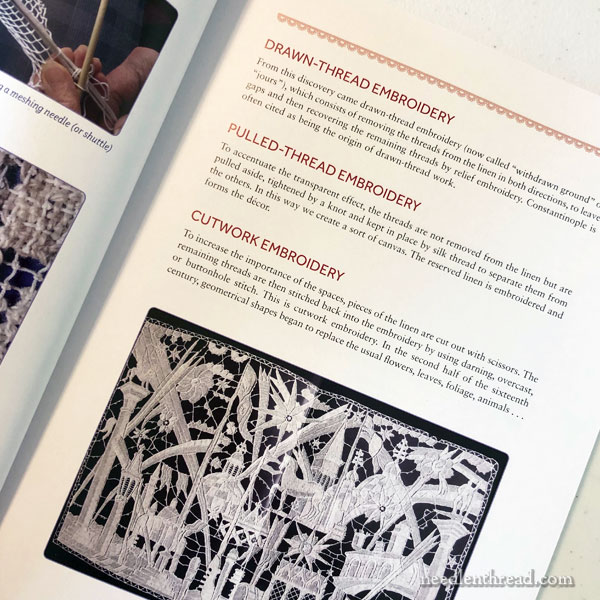
I appreciate that the book begins with some history and development of needle lace. I think this type of information helps to put needlework techniques into context, so that we can see the traditions that we’re building on as we explore them and bring them to life in new ways.
Whenever I look at any kind of art, I want to see where it has come from and where it is going, so these historical introductions are important to me. This one is good and readable, and it divides the history of needle lace techniques into a kind of flowing development from one technique to the other, putting them in context of time and place.
It also delivers clear photos of different types of needle lace and explains what type they are and how they differ from similar types.
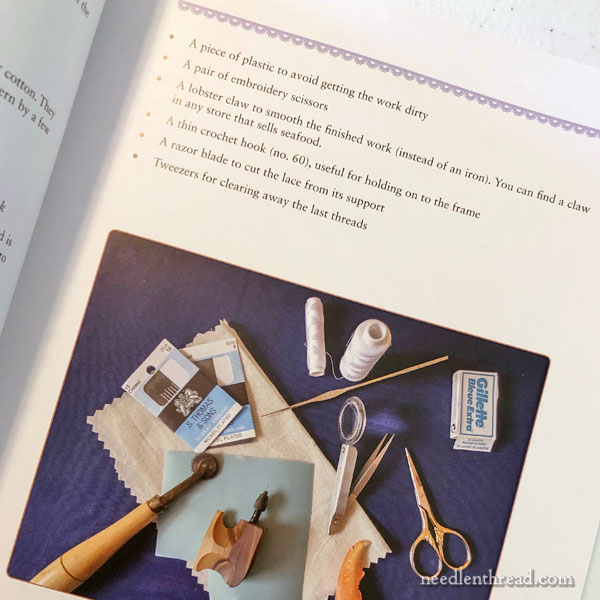
Then we move into the materials required for needle lace – which are not complicated at all!
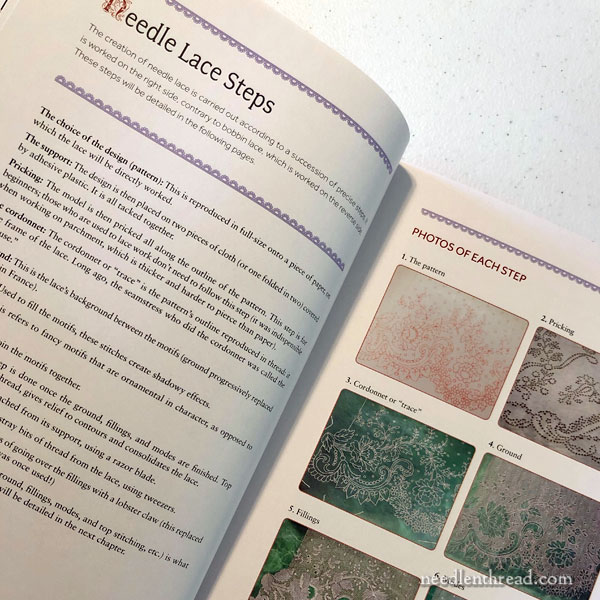
From here, the book moves into a general overview of how needle lace is created and the basic techniques involved.
At this point, it isn’t so much about specific instruction as it is about giving the reader an idea of what is involved in creating needle lace.
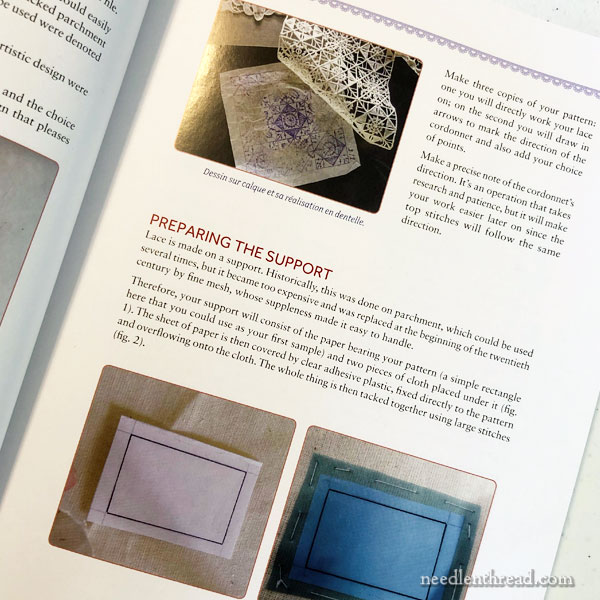
It’s in this section that you learn about setting up a needle lace project, the basic principles to follow in working a design, and so forth.
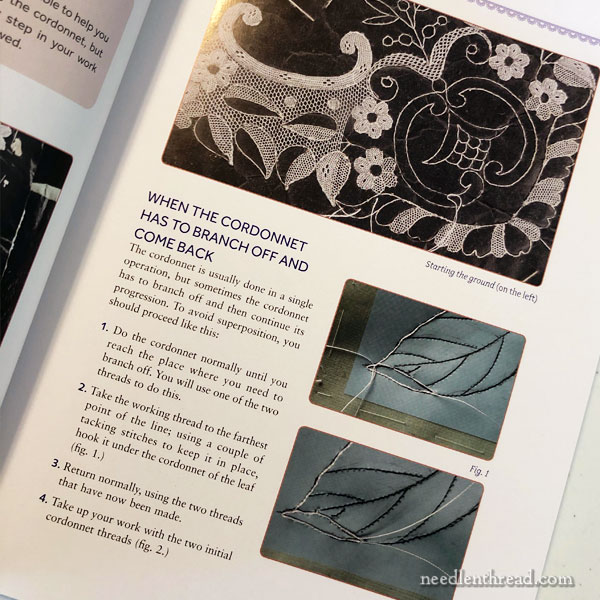
We learn about the order of work, what parts to tackle first, how the work should flow from one part to another, and all the general information that would apply to any specific project, small or large.
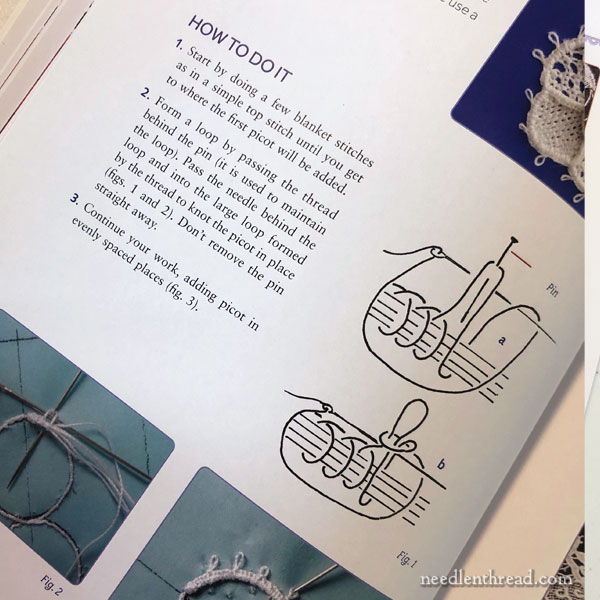
Then, the book moves into more specific instruction, with explanations and diagrams that demonstrate the principal “points” (stitches) of needle lace.
As you work your way into the book, this is perhaps where an obvious negative aspect of the book comes into play. I’m guessing that the translation was probably done by a professional service involving people who are not familiar with needlework.
The translation from French to English is a bit sticky, and the translation of technical words relating to textiles, embroidery, needle lace and so forth are either missed altogether or awkwardly translated. It really is a shame that some publishing companies don’t seek professionals in the field to help them create better and more accurate translations.
Nevertheless, there’s nothing in here that you can’t understand, even if you have no knowledge of French. The translation could just be smoother and bit more consistent.
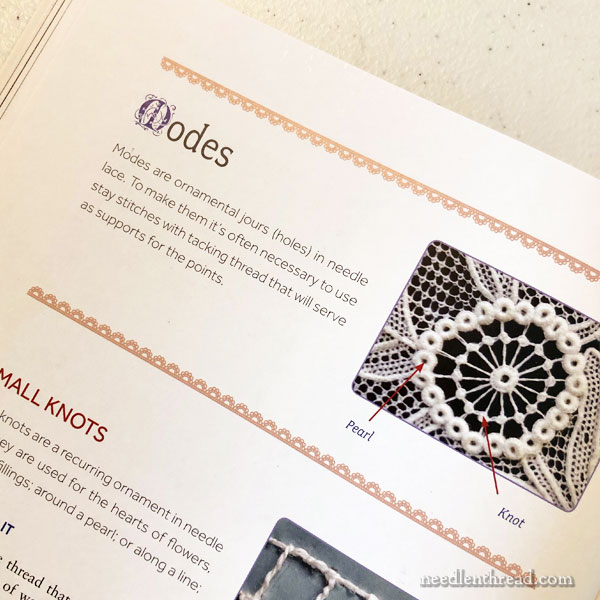
The instruction, which covers the stitches used in needle lace (and many variations), fillings, decorative elements, and grounds, is excellent. The hand-drawn diagrams, the photo tutorials, and the written explanations are all clear and easy to understand.
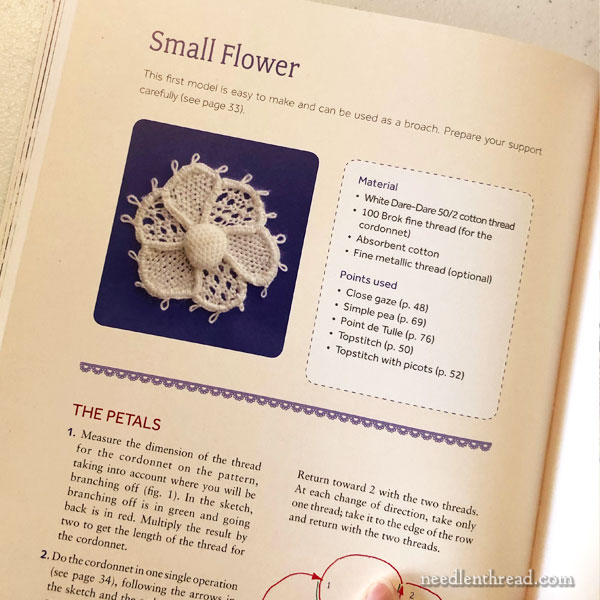
At the end of the book, there are six small and manageable practice projects that build on the skills covered in the instructional part of the book. The projects start basic and they progress to slightly more complex.
Following this, there is an author’s gallery of modern needle lace work.
In a Nutshell
New needle lace instructional and project books are fairly rare these days. While there are some good ones out there (old and new), there aren’t a lot of them. So I was really happy to come across such a good overview of techniques that instructs well and gives the opportunity for guided practice projects.
I think the book is worth having if you have any interest in needle lace. It would also be a handy book for folks who have an interest in stumpwork (which sometimes involves needle lace fillings).
The only real negative to the book, in my mind, has been mentioned – the translation is not as good as it could be. There are also captions that were not translated at all (so the editing lacks a bit, too). Weighed against the content, though, these difficulties are minor.
Where to Find It
A Practical Guide to Needle Lace is available through the following book sources:
If you’re in the US, you can pick it up through Amazon. You’ll find it on my Amazon Recommendations page here, under the “Browse my Amazon Recommendations” list.
Worldwide, with free shipping, you can find it through Book Depository here.
This article contains affiliate links to book sources, which means that Needle ‘n Thread receives a small commission for purchases made through those links with no extra cost to you. Every little bit helps, so thank you for using my affiliate links!